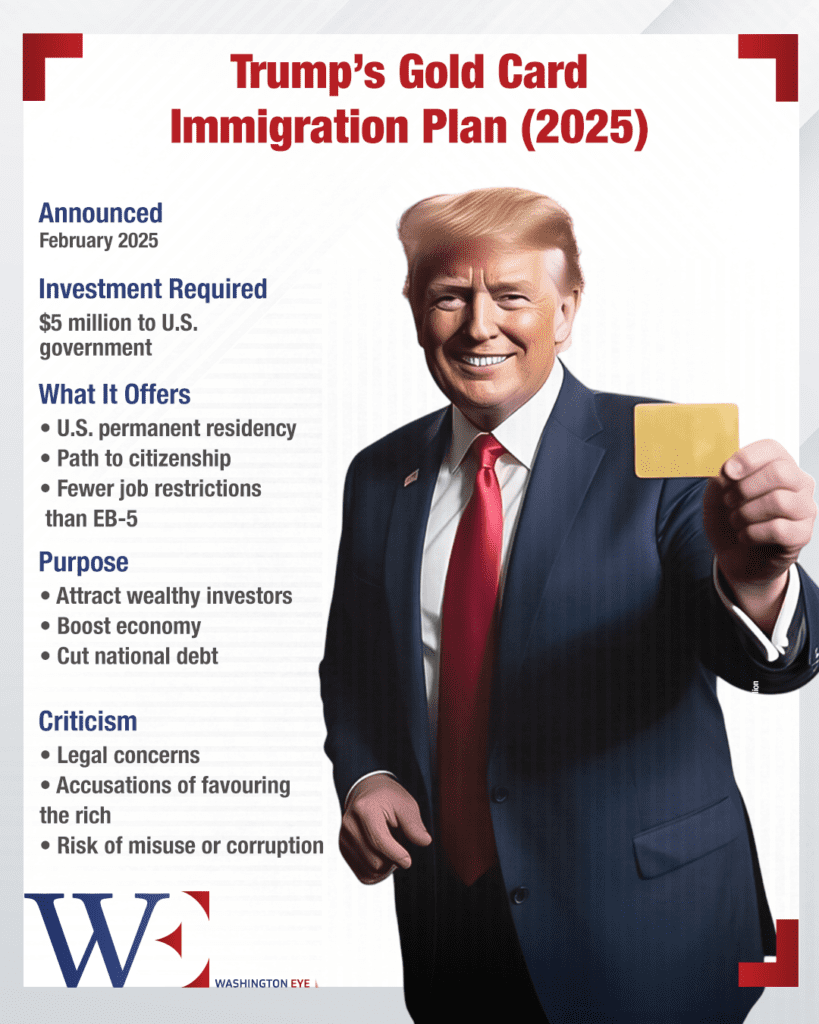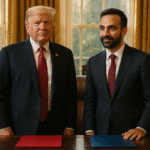In a significant policy shift, President Donald Trump announced on February 25, 2025, the introduction of a new “Gold Card” visa program aimed at attracting wealthy foreign investors to the United States. This initiative seeks to replace the existing EB-5 visa program and offers a streamlined pathway to U.S. residency and potential citizenship for affluent individuals willing to invest substantially in the country.
The “Gold Card” visa is priced at $5 million per applicant. Unlike the EB-5 program, which required a minimum investment of $1 million (or $800,000 in targeted employment areas) along with the creation of at least ten full-time jobs for U.S. workers, the new visa eliminates the job creation mandate. Instead, it focuses on direct financial contributions to the U.S. economy. President Trump emphasized that this approach would attract “the most successful job-creating people from all over the world” who would “be spending a lot of money and paying a lot of taxes and employing a lot of people.”
Commerce Secretary Howard Lutnick indicated that the “Gold Card” visas would be available within approximately two weeks from the announcement date, suggesting a rollout in early March 2025. Lutnick also noted that over 1,000 cards had already been sold, reflecting significant initial interest in the program.
Eligibility and Vetting Process
Applicants for the “Gold Card” visa must undergo a thorough vetting process to ensure they are “wonderful world-class global citizens,” according to Lutnick. While specific criteria for this vetting have not been fully detailed, the administration has stated that the process aims to attract individuals who will positively contribute to the U.S. economy and society.
The administration projects that the “Gold Card” program could generate substantial revenue, with President Trump suggesting that selling one million of these visas could raise $5 trillion, potentially aiding in reducing the national debt, which stands at approximately $36.5 trillion. However, these projections are ambitious, especially considering that the previous EB-5 program issued around 8,000 visas annually.
Comparison with EB-5 Program
The EB-5 program, established in 1990, allowed foreign investors to obtain permanent residency by investing in U.S. businesses and creating jobs. However, it faced criticism for being susceptible to fraud and not effectively benefiting economically distressed areas as intended. By contrast, the “Gold Card” visa simplifies the process by removing the job creation requirement and focusing solely on the financial investment aspect.
Investor visa programs are not unique to the United States; over 100 countries offer similar “golden visas” to attract wealthy individuals, including the United Kingdom, Spain, Greece, Malta, Australia, Canada, and Italy. These programs have been both praised for attracting investment and criticized for potential security risks and economic inequalities.
The “Gold Card” visa has sparked debate and criticism from various quarters. Some experts express concerns about the potential for misuse by individuals seeking to launder money or evade justice, drawing parallels to issues encountered with the EB-5 program. Additionally, there are apprehensions that the program could exacerbate economic inequalities and fail to deliver the promised economic benefits.
Furthermore, the program’s implementation without explicit congressional approval raises legal questions. While President Trump asserts that the “Gold Card” does not require such approval, the U.S. Constitution grants Congress the authority to establish rules for naturalization, potentially leading to legal challenges.
The introduction of the “Gold Card” visa represents a notable shift in U.S. immigration policy, emphasizing financial investment over traditional criteria such as family reunification or employment-based sponsorship. While the program aims to attract substantial foreign capital and stimulate economic growth, it also raises significant questions regarding equity, security, and the overall impact on the U.S. immigration system. As the program rolls out, its effectiveness and implications will be closely scrutinized by policymakers, legal experts, and the public alike.

















